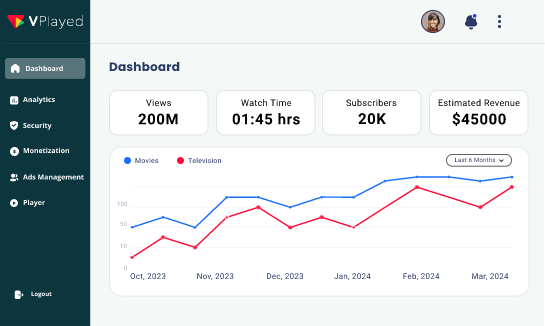Stream & Earn Revenue From Your Video Content With 10+ monetization Models & 1000+ Features.
Book a Free DemoWhat is Advertising Video On Demand? AVOD Meaning & Benefits

Over the last few years, the popularity of advertising video-on-demand services has been increasing rapidly.
With the prediction of Deloitte Global that almost two-thirds of consumers in developed countries will use at least one AVOD service monthly by the end of 2025, the trend is likely to continue.
Moreover, by 2030, the majority of online video streaming subscriptions are expected to be partially or wholly ad-funded, catching up with emerging markets where ad-funded video-on-demand is the usual norm.
The rise of Advertising video on demand can be attributed to several factors, including steep inflation rates eating up income gains for many consumers.
Many streaming video services in developed markets used to offer ad-free experiences as part of the benefit of a subscription, with the expectation that viewers would never return to ad-supported services.
This subsequent change has been quite impactful in its way!! You might be wondering how you can leverage all of it ??
Then, let me tell you..
It is observed that in this growing demand, there has been a steep increase in premium productions all over the world, which is in part because of ready-to-use available technology.
YES.. Really it is!
As people have become accustomed to being at home most of the time, the OTT revenue model or over-the-top platforms responded to the increasing at-home media usage.
Also, popular revenue channels just like Ad-supported Video Streaming Revenue on Demand or AVOD are one among the important models that will work for operators and is an excellent way to monetize your VOD platform.
And, of course it is said to be a master-striking monetization strategy amongst others.
Now let’s look into the..
Table of Contents
Overview of VOD or On-Demand Content Platform
What is VOD? Video-on-demand is a type of content distribution platform that offers viewers the ability to opt for how, when, and where they see media. They just have to click on a link and begin watching a video.
Video-on-demand has some basic advantages like it lets viewers view the content at any time – consumers can play content whenever they like.
Users can control what they watch and have extra opportunities to select what they see, in comparison to conventional TV scheduling.
When all this is combined, top VOD platforms offers audiences the complete freedom to see content in a user-friendly, convenient and reachable way.
– a few of which you use every day. It has become more valuable than before in the current COVID-19 pandemic scenario.
AVOD Meaning – What does Advertising Video on Demand stand for?
AVOD (Advertising-based Video on Demand) is a video streaming model where viewers can watch content for free, but advertisers pay to display ads before, during, or after the video, making it an ad-supported streaming service.
It is a unique service where viewers engage with ads to gain free access to the content they desire. Platforms like YouTube, DailyMotion, MX Player exemplify the popularity of AVOD.
This model particularly benefits those with a substantial fanbase or a focused audience, as ad views yield significant revenue with minimal investment.
Over the past few years, Advertising based video on demand has experienced substantial expansion, and this trajectory is expected to persist into 2025 as well.
The on-demand streaming sector has opened up extensive avenues for broadcasters to unveil novel content to their audiences.
- AVOD Business Model
Advertising-based video on demand business model is based on generating revenue via advertisements. This highly used model has three key players: content creators/publishers, advertisers, and audiences/viewers. Let’s take a closer look at each one:
- Content Providers
We all will agree that content creators and publishers are the backbone of any AVOD business model. They are the ones who put all the effort into creating high-quality content that attracts end-users and advertisers.
The more the content gets the views, the more revenue it generates for the publishers through ad revenue, thereby creating a mutually beneficial relationship.
- Advertisers
Advertisers are another crucial player in the this business model. They pay publishers to promote their goods or services to an audience that is truly interested in what they have to offer.
In this case, advertisers completely rely on publishers to ensure that they reach the correct audience, which can then be converted into a paying customer.
- Viewers
The audience is critical to the Advertising video on demand business model as they spend their valuable time watching the content. When viewers view ads, advertisers pay for their attention.
Here, viewers become a prominent point of attraction for both parties. As a result, creating a positive user experience for the audience is critical for retaining their loyalty and attracting new advertisers to the platform.
Looking To Build Your Own Video Monetization Platform?
Start and Grow Your Video Streaming Service With 1000+ Features & 9+ Revenue Models.
 Highly Customizable
Highly Customizable Life Time Ownership
Life Time Ownership Own 100% of Your Revenue
Own 100% of Your Revenue
 Full-Branding Freedom
Full-Branding Freedom

Various Ad Options for your AVOD Businesses
AVOD businesses and platforms can use various ad formats like pre-roll ads shown before videos, mid-roll ads during playback, and post-roll ads after content, along with video ads on the platform.
As this model benefits both advertisers and content providers, it has become an increasingly popular strategy in the online video streaming platform.
1. Video Ads
It becomes essential to provide various types of video ads to attract different types of advertisers and target audiences from various geographical locations.
Indeed, offering different video ad formats can help businesses meet the needs and objectives of advertisers while providing a better experience for the audience.
2. Pre-Roll Ads
Pre-roll ads are an excellent option for businesses as they ensure that viewers will see the ad before accessing the content that they are very much eager to watch.
Pre-roll ads are highly effective in capturing the end-users attention, especially when they are a bit relevant to the content that follows after the advertisement.
3. Mid-Roll Ads
Basically, Mid-roll ads are played during the online video stream, in the middle of the content. They are highly effective because they appear at a point where the end-user has already gone deep into the content, making it more likely that they will continue to watch and finish the advertisement.
In short, due to content curiosity, the end-user will definitely watch the advertisement till the end.
4. Post-Roll Ad
When it comes to post-roll ads, the ad is played at the end of the video stream, and is a good option for advertisers looking to maximize engagement and ensure that viewers watch the entire ad.
Post-roll ads are displayed after the content ends, making it more likely that the end-user will watch the entire ad before moving on to the next piece of content.
In conclusion, we can say that by providing a variety of video ad formats, AVOD businesses can attract advertisers and provide a better user experience for the audience.
By understanding the different types of video ads available and their respective benefits, businesses can choose the right video ad formats that meet their needs and objectives.
Great.. You must be musing about..

Why Choose Advertising Video On Demand For Your Streaming Business?
AVOD is completely free, which makes it extremely accessible to any kind of audience. Advertisers all around the world want to implement this monetization model since it helps them to get their brands in front of a large number of people and build brand recognition.
As a result, it proves to be naturally the best alternative for advertisers trying to reach customers directly.
Now, customers are looking for sports broadcasts, television shows, and other forms of content. The Advertising Video on Demand sector, in particular, has seen fast expansion and spreading out across numerous markets worldwide. The markets across Europe and Latin America appear to be the most interested in Advertising video on demand.
Let us discover what makes AVOD or Ad-based model a #1 recommended option for video monetization platform.
What Are The Benefits Of Using Advertising VOD Platform?
AVOD platforms provide benefits such as reaching a wider audience with free content and boosting ad revenue opportunities for content creators and businesses by offering flexibility in ad placements. However, challenges like ad fatigue and potential user drop-off could affect viewer retention and engagement.
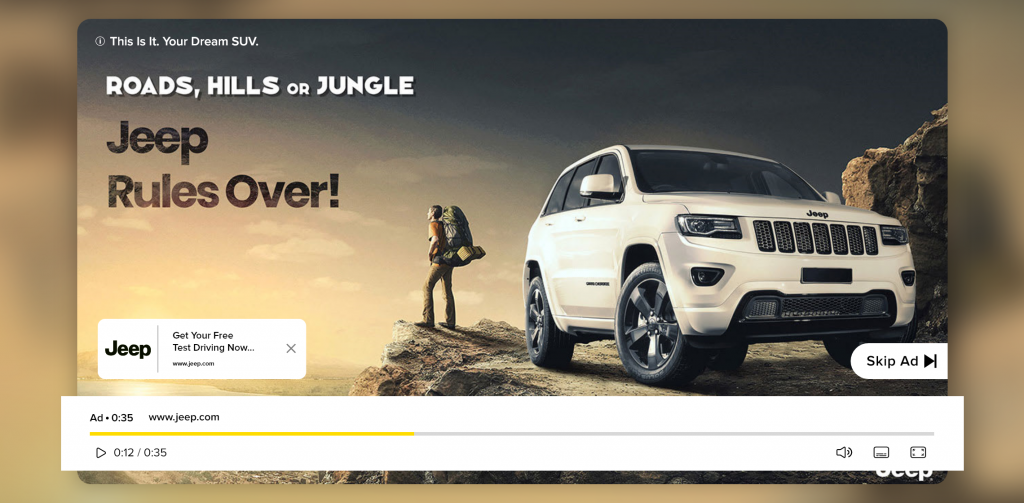
1. High-level User Acquisition Creates A Room
As it’s a free model it is hugely attractive to a wide range of audiences. Though a lot of people are willing to pay subscription fees for high-value content, a lot more will be available to consume it if they can see it for free.
2. Optimum Revenue Source Is A Plus
AVOD has outstanding potential for platform owners & advertisers as both can gain maximum traction of digital ads, leading to profit perks since they are on demand currently.
3. Forecasts Indicate Huge Scope for Broadcasters
Subsequently, insights from Global video ad expenditure let us know that it is expected to rise revenue & reach nearly $36 Million by 2025.
4. Customization of Ads Gears Microtargeting
With personalized advertising, advertisers are better placed with their target audience. This aids them in making more sales and enhances the user experience.
5. Variety of Ad Video Formats
Advertising formats in AVOD comprise display banners, sponsored content, and other streaming ad creations like binge and pause ads. That’s because streaming platforms and ad collaborators are increasingly making ads more appealing to consumers.
Having said that, it’s an ideal time to take advantage of this advancing trend and of this advertising-based business model.
What are the Disadvantages of AVOD?
- Ad Dependence
Relying on ads for revenue makes vulnerable to economic shifts and changes in viewer demographics. During tough times, businesses might trim their ad budgets, thereby impacting the money AVOD platforms make.
Similarly, shifts in who is watching can affect how effective ads are. This means that the income of Advertising video on demand platforms can be uncertain, and it is something to keep in mind as you navigate the world of ad-based streaming.
- User Experience
Ever find ads interrupting your streaming experience? That’s a common gripe with AVOD. Ads can be intrusive, disrupting the smooth flow of your favorite on-demand content. It is this inconvenience that often nudges viewers toward ad-free subscription-based services (SVOD).
After all, who doesn’t want uninterrupted binge-watching sessions? Striking a balance between revenue and a hassle-free viewing experience is key, especially when it is your personal time and enjoyment at stake.
- Content Discoverability
Ever thought about how hard it is for your favorite creators to get noticed? AVOD platforms struggle with making content stand out. If you are a content creator or a business owner whose revenue revolves around content, you know the drill – it takes a lot of effort.
From mastering SEO tricks to consistently delivering top-notch, unique content, creators work hard.
Regular keyword analysis helps them identify the specific terms their target audience is searching for and the underlying search intent, while content gap analysis uncovers opportunities to create content that addresses unfulfilled needs.
Yet, even with all that, standing out in the crowd remains a real challenge. So, if you are thinking of diving into the AVOD, be ready to tackle the hurdles of content discoverability.
How AVOD Works In Insertions – CSAI & SSAI?
AVOD (Advertising-based Video on Demand) Platforms work by inserting ads into video streams to monetize through client-side ad insertion (CSAI), where the viewer’s device fetches and plays ads, or server-side ad insertion (SSAI), where ads are stitched into the stream by the server to ensure smoother playback and ad-blocker resistance.
While talking about the CSAI or client-side ad insertion solution, it works through an application which sends API requests to the ad server, for it to serve or deliver ad streams.
Then, when we look into SSAI or server-side ad insertion, we come to know that it stitches or inserts the ad media directly to the main video stream, thus eliminating the need for a server request to receive adverts.
Let’s explore both of its intricate functionality..
Client-Side Ad Insertion
CSAI is the process of sending ads to clients via mobile, gaming consoles, desktop, etc; in which the client-side player requests the ad-server for the advert during the time it reaches the particular ad-markers in the stream or manifest file.
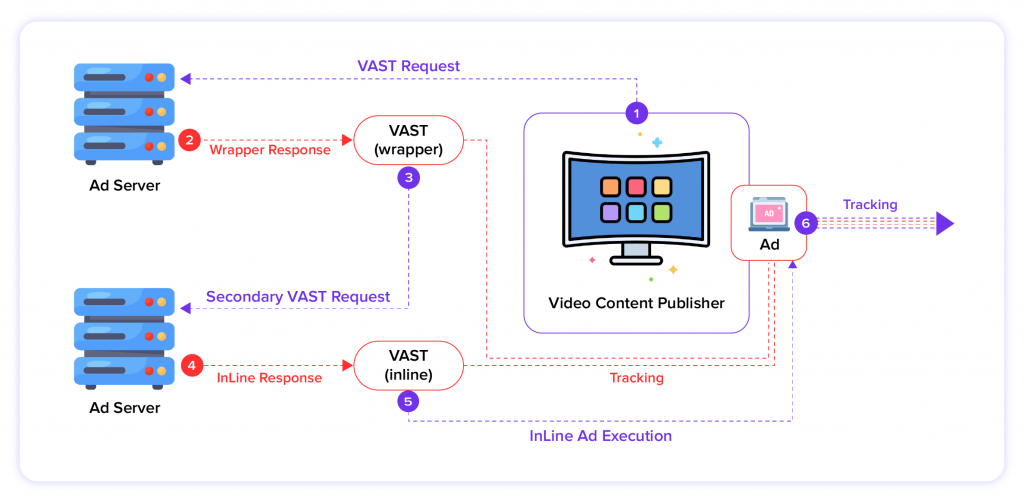
When the server receives a request at the client’s-side player, it makes use of the data to know which is the suitable ad to cater to that particular client’s player.
Then, it responds with the information of the ad. After that, the player automatically pauses for a bit in the middle of the video. Followingly, the ad gets played and then the video resumes.
Server-side Ad Insertion
SSAI – also referred to as DAI or Dynamic Ad insertion is an insertion technique whereby media (video and audio) are put on directly into the video that is currently being streamed – at the server in cloud video streaming but not at client’s server on-premises.
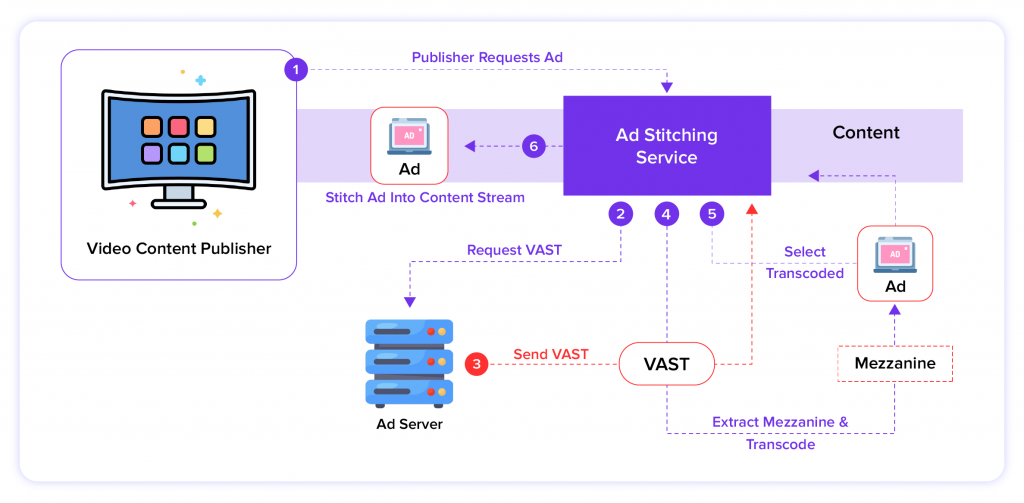
Moreover, in SSAI, the CSAI is quite different from SSAI to facilitate ad insertion. Since it’s a popularly chosen top video monetization platforms amongst top brands, currently SSAI is preferred than the other one.
How Is It Different From Other Revenue Models?
AVOD can be a perfect option for content creators and platform owners to make money with videos, since it can be sailed through while investing to have lump sum returns. In order to profit immensely, and this model does not require to create or sell a product outright.
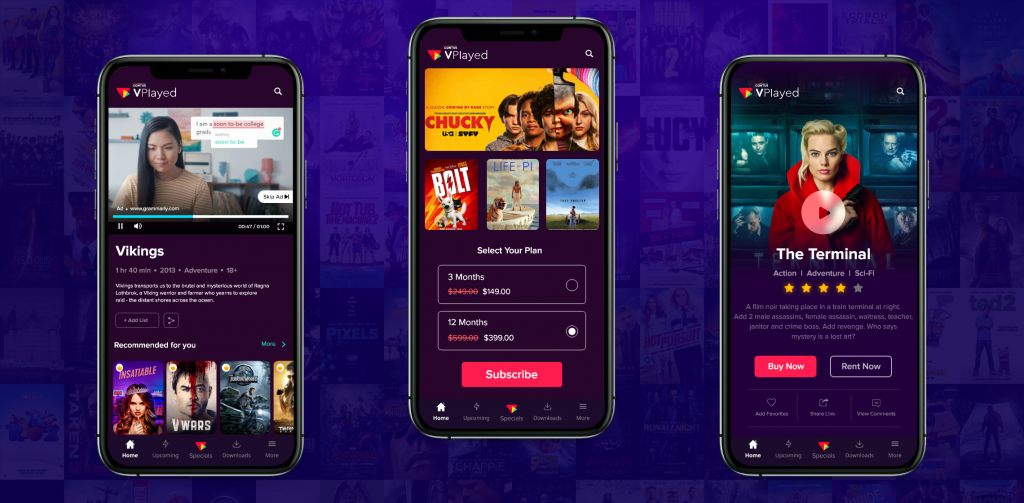
Instead, space in your video is simply offered up to companies for running an advertisement. This gives you an extremely simple and hands-off method of monetizing content in a jiffy.
Now you must be thinking if given a chance, which would be the best option to monetize? Is it SVOD, TVOD & PVOD??
If you ask me, you can explore two ways of monetizing your top AVOD platform. One is, you could combine PPV(Transactional Video on demand) & PVOD, and SVOD platforms to facilitate your viewers with a general subscription service & charge extra for premium gated content.
Or, you can also try having a combination of instream-ads injected into subscription videos for viewers choosing monthly subscription. Besides that, if you want to also utilize all three, that’s also a way!!
Ultimately, it’s up to you to decide to leverage pay-per-view in livestreams, throw skippable ads for good measure!!
Ofcourse, there’s a question coming up in your mind!
Why is VOD supposedly held as suitable revenue monetization compared with the rest??
Then, let me tell you how it evolved.. VOD began with movies. Users turned to streaming platforms such as Netflix and VOD services that were linked to cable subscription accounts instantly.
As people have become accustomed to being at home most of the time, the OTT revenue model or over-the-top platforms responded to the increasing at-home media usage.
To add to this growing demand, there has been a steep increase in premium productions from all over the world, which is in part because of ready-to-use available technology.
Get to know the other types of monetization models that you can explore:
- SVOD – What is subscription video on demand, the money-generating model and the most common type of VOD services provided by media companies presently. It’s a type of service that gives users access to a whole video library for a small repeated fee.
- TVOD – Pay-Per-View or TVOD is a transactional video on demand service that lets you purchase content on the basis of, as the name suggests, viewing each content as your consumers pay.
- PVOD – No wonder why 55% of Americans use Netflix or alike where a billion hours of streaming is done per week. Premium video on demand, lets you simultaneously strategize broadcasts just before the theatrical window comes up.
Instances When a Streaming Business Can Monetize with AVOD
AVOD usually connects with paid or free aired content to generate surplus revenue that boosts your business as compared to others.
For example, PPC or getting paid per click is a great way to get in money from your blog. Google will go look for advertisers or deal directly with companies searching to spend money on advertising.
It is a great option as an advertising-based revenue model for all else except new content, famous blockbuster movies, and popular content of which a famous celebrity is a part.
This business model is extremely well-suited for content providers or operators who have a broad variety of content like TV content, catch-up content and influencer content like vlogs from celebrities which appeal to the youth of today.
Advertising video on demand is super good for content aggregators who have a great deal of content pouring in from varied sources, and super great for broadcasters who have new and saved content.
It is well-suited for free-to-air channels on TV that can offer an optimal revenue stream.
Some kinds of content are more suitable for Advertising video on demand like lengthy content and old movies as there is adequate time to show ads as a part of the whole package to make fair the cost.
Conclusion
Operators in a zone where Disney+, Netflix, Apple TV, and Amazon TV app are seizing market share, AVOD may be what you are finding to offer an extra revenue stream.
AVOD is a service that generates free traffic and the excellent advantage to providers is its ability to gather user information which can be used to improve an SVOD offering.
If You Already have an idea about launching a Video Monetization Platform, Schedule a free demo and We’ll Get You On The Road To VOD Streaming Success!
Frequently Asked Questions (FAQ):
Advertising Video On Demand is a sort of service in which users have to watch advertisements in order to view the content they want to watch for free. Like many other advertising models, the primary goal of advertising is to generate revenue from streaming content.
Advertising video on demand is just one of the several viable ways to monetize on-demand videos. The primary goal is to provide free viewership. This type of monetization is a low-risky method of earning handsome revenue. Here, publishers can attract more and more diverse advertisers.
Consider the following factors for choosing the right platform provider – Your intended audience, the level of privacy & security you may require now or in the future, the type of content you wish to deliver, etc. You should also consider other video on demand advertising models before coming to a conclusion.
In general, the AVOD monetization model is highly sought-after by advertisers as it allows them to put their brands in front of a large number of users and build brand recognition. That is why this type of advertising becomes an ideal choice for advertisers in every single situation.
This monetization strategy is used by some of the most well-known video streaming providers out there. When it comes to prominent and well known examples, the names include – YouTube, Instagram, Dailymotion, MX player, Roku, Pluto TV.
YouTube, the world’s most well-known Advertising-Based Video On Demand platform, enables free content access for users while generating revenue through advertising. This colossal platform, synonymous with free online video content, reaches billions globally.
AVOD platforms are prevalent across popular social media channels and Over-The-Top (OTT) content platforms. Examples include widely-used platforms like TikTok, Facebook, YouTube, and Instagram. These social media giants leverage advertising to provide users with free access to a diverse range of content.
Distinguishing between SVOD and AVOD lies in their respective models. SVOD functions on a subscription basis, requiring users to pay a fixed fee for unrestricted access to a content library on a monthly or annual basis.
Several prominent video streaming providers employ the AVOD monetization strategy to offer free content access to users. Notable examples include YouTube, Instagram, Dailymotion, MX Player, Roku, Pluto TV, Hulu, and Peacock. These platforms leverage advertising to sustain their models, allowing users to enjoy a diverse range of content without direct charges.

